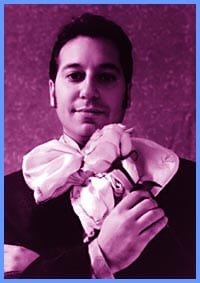As a neurotic child growing up in the 1980s, I found there weren’t enough abstract things to fret over. Nuclear war. Sex. Environmental destruction. Never making it to a big city where life would be exciting and free. Then at 15, I lucked out: I stumbled upon a New Agey book about entropy, a concept that ate all the other fears whole.
Though it was born as a thermodynamic principle – energy cannot be created nor destroyed, but it can be transformed from useable to unusable, from order to chaos – entropy grew into a depressing world view. The world starts out with diversity and difference, but ends up as a homogenous lump. Apply it, sadly, to culture and you’ve got assimilation, with everyone at McDonald’s drinking Coke.
Entropy’s apparent effects on gay culture are particularly engaging. Toronto writer Bert Archer’s new book, The End Of Gay, talks about how polymorphously perverse straights are behaving like gay people, breaking free of forever marriages and becoming more fluid in their sexuality.
Archer’s opus is the bookend to Daniel Harris’ 1997 book, The Rise And Fall Of Gay Culture, which claims that gay culture is getting increasingly straight. Harris argues that now that homosexuals are no longer oppressed, they’re pairing up, living banal suburban-style lives and producing pedestrian art.
Where Harris and Archer agree is the becoming-same of gay and straight cultures. It’s just a matter of which side prevails. Harris’s idealized outlaw life is being abandoned by homos, just as Archer’s straights look like they’re ready to play with gay.
Entropy makes such mergers seem despairingly inevitable. But humans have always found a way around entropy. The forces that have brought increased assimilation have also brought increased individualism. And individuals can do some pretty kooky things.
Social connections have grown increasingly diverse and fragmented. People can follow their most esoteric desires and still find peers. Subcultures of leather aficionados, non-women-identifying females, HIV-positive sex maniacs and multitude other interests and identities have developed.
If there ever was a monolithic gay culture set against a monolithic straight culture (a dubious premise to begin with), it is true that they’re both falling apart. But the resulting smaller communities offer more diversity and more opportunity for exploration than gay-straight ever did. Identity seems to have less to do with it than a capacity to envision one’s own life in a creative, fulfilling way.
And there will be times when these overlapping ever-changing subcultures will even have common goals and common needs. And they’ll be lucky to find that late 20th century gay culture has given them a structure within which to work together. A structure that is fluid and flexible, that is pro-choice, pro-change and usually tolerant of diversity.
You don’t have to call it the gay community – Archer and Harris likely won’t – but will it really be so different from the strange mesh of associations we call a gay community today?

 Why you can trust Xtra
Why you can trust Xtra


